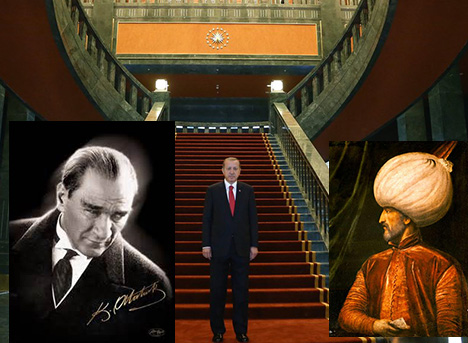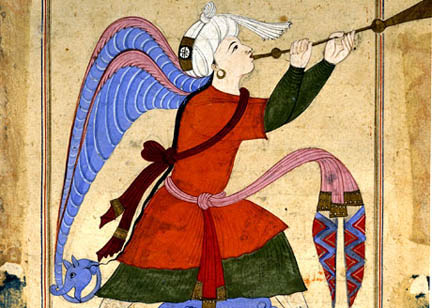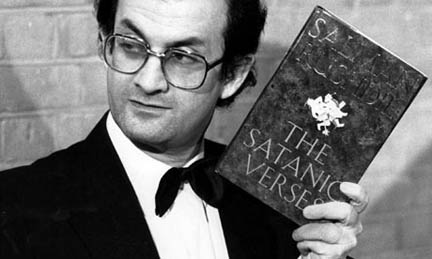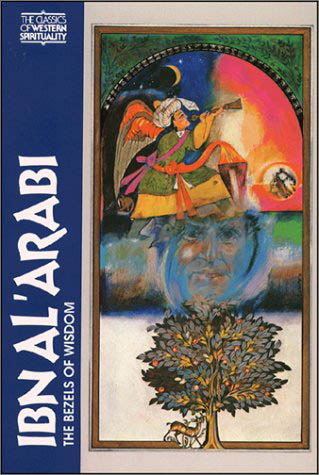




There is a new exhibit on Iran at the Victoria and Albert Museum in London through 12 September. If you cannot make it to the exhibition, there is a brief trailer. You can also learn about the exhibition here and there is a slide show of 15 objects over 5,000 years here.

One of the rather silly parts of the coverage of the event on the website is having images with a woman or two women (perhaps to encourage masks…) observing the items, as in the following.


Turkey in the Ergogan era is undergoing an interesting change. Now it seems the course is less about economically reinvading Europe than going on a kind of Ottoman-matic pilot course. A committee has recently announced a call to have mandatory teaching of Ottoman in Turkish high schools. “According to the proposal, Ottoman Turkish should be compulsory because people in Turkey are not able to read documents from Ottoman times, including the epitaphs of their forefathers. The proposal argues that Ottoman Turkish is necessary to keep Turkish people’s ties with their past strong,” notes a Turkish paper. As a student of history in the region, I am delighted that there should be such an interest in promoting the study of Turkey’s Ottoman past. But given that Ataturk must be rolling over in his mausoleum, one wonders about the political symbolism in such a revival.
President Erdogan has come under considerable criticism at home and abroad for his support of the Muslim Brotherhood, a more conservative brand of Islam than many Turks favor, and his apparent failure to stem the tide of Western and Arabic recruits for the ISIS/ISIL/IS caliphate in the making (and unmaking) to his south. Now that there is a new Ak Saray (White Palace) for President Erdogan with 1,000 rooms on 150,000 sq. m of former forested land and at a cost now nearing $615 million, the idea of reviving the Ottoman caliphate is clearly waiting in the wings (and that saray has a lot of wings). The Middle East still has its kings, sultans and emirs, even if most of the dictators have bit the dust. So can Ak Saray blend with the Topkapi to form a new re-Ottomanized Turkey? Continue reading Otto-mania

Arabic Paper #0972, University of Utah- J. Willard Marriott Library
by Anouar Majid, Tingis Redux, January 31st, 2013
After reading Jonathan Bloom’s splendid book Paper Before Print: The History and Impact of Paper in the Islamic World, published more than decade ago, I now think that there is a close relationship between Islam as we know it and the discovery of paper by Arabs in the 8th century. I also understand why natives of Tangier in Morocco call paper “kaghit.†Since it was the Chinese who invented paper some 2000 years ago, the Muslims who conquered Central Asia in the 8th century used that term, which was borrowed from the Persian kaghaz, itself originating from the Chinese guzhi.
The Muslims adopted paper with gusto and the technology of papermaking soon spread in Iraq, Syria, Egypt, North Africa and Spain. Europeans learned papermaking from the Moors who established the first paper mills in Spain. Paper eventually facilitated the printing process that was started by Johann Gutenberg in 15th-century Germany.
According to Muslim sources, the first Muslim paper mill was established in 8th century Baghdad either by the Abbasid caliph al-Mansur or by Harun al-Rashid. Regardless of who claims the honor, the use of paper soon led to the establishment of a Stationers’ Market (Souk al-Warraqeen). By the 12th century, according to one account, the Moroccan city of Fez had some 472 paper mills. No wonder papermaking has been associated with Arabs and Arabic. When one talks about “reams†of paper, one is using an Arabic term—rizma, which means bundle—via the Spanish resma and Old French rayme.
The discovery of paper by Arabs led to a major revolution in human civilization. Until then, most documents outside Asia were written on parchments (dried animal skins) or papyrus rolls—both laborious and expensive processes. Paper was easier to use. The Abbasids lost no time in making use of it to enhance their standing among world civilizations. They established a House of Wisdom (bayt al-hikma), commissioned the translations of foreign works in Greek, Hindu and Persian, wrote down the Hadith and codified Islamic law from what had been a mostly oral tradition. Libraries grew and played a major role in the dissemination of knowledge. The Shiite dynasty of the Fatimids in Egypt had an annual budget for library collections and activities. Continue reading Islam: The Chinese Connection

The angel Israfil from the Aja’ib al-Makhluqat of al-Qazwini, Mamluk, period. Illustration in the British Museum
[The following is part six of a series on a lecture presented in the Hofstra Great Books Series on December 5, 1993. For part five, click here.].
Concluding Remarks
The most important part of any lecture, assuming one is not completely turned off in the first minute or two, is supposed to come after the words “in conclusion.” In conclusion. This means there must be a need to conclude something. Regarding the Quran as a great book, there is little need to conclude anything. The mere fact that this talk was scheduled and that you came shows that a sacred scripture commanding the attention of so many people on earth warrants consideration. Regarding how Muslims view the greatness of their Great Book, there is too much to conclude, too great a gap in experience, too challenging a call for empathy. Rather than try to tell you what the Quran is in a nutshell, I would simply ask that sometime soon you try reading it or at least a selection of excerpts. A good place to start is the superb translation of select texts by Michael Sells’ Approaching the Quran.
However, having raised the issue of The Satanic Verses in a lecture on the Quran, a final comment does need to be made. If I were to simply tell you that most Muslims approach their sacred book quite differently, as I see it, than others approach their scriptures, you would probably say “alright, so things are different, so they have a right and we have a right, so what?” Even if the statement of faith outlined in the fatiha or the line of reasoning articulated by a brilliant scholar like Ibn al-‘Arabi is instructive, you would probably still walk away tonight basically unchallenged and unchanged. Continue reading The Quran as a Great Book: Muslim Perspectives, 6

Salman Rushdie, author of The Satanic Verses
[The following is part five of a series on a lecture presented in the Hofstra Great Books Series on December 5, 1993. For part four, click here.].
The Struggling Believer’s Novel and the Text
I could easily continue this discussion of the views of Ibn al-‘Arabi for hours, days, or weeks (how long would it take to simply read 17,000 pages in his major work?) It is valuable to probe with a believer like this great scholar into the depths of his own meaning-rich search through the language of the Quran. But much has happened in the past 750 odd years in the Islamic World. Muslims, through no fault of their own, have been caught up in a broadening discourse defined in large part by the overtly Christian West, even though any distinctive Christianness may have largely eroded. In contrast, Ibn al-‘Arabi lived in a world in which the Quran’s detractors — those who did not grapple with this Arabic text as a revelation — were few and far away. To be sure there were debates over the form of the revelation, although these were tilted to orthodoxy rather early on. But in his day there was no viable reason in the Muslim context not to accept the Quran as revelation.
Muslims over the past couple of centuries have been compelled to defend the Quran against what they believe is a secular war aimed at the integrity of their religion. The heartland of Islam since the 16th century has been dominated by Ottoman Turks (Muslim converts, it must be remembered) up until this century, with European colonial powers nibbling away at the often frayed edges of the Sublime Porte. The more recent raw power politics of this century, be this the regimen of Western-trained military elite takeovers, the imposition of secular Israel in a predominantly Islamic Middle East, the cleric-driven drive for a militant, rejectionist radicalism in Iran and Afghanistan, the dirt-poor rage of simple Egyptian fundamentalists, the cold war Sadaamizing of Kuwait, the collective blinking as Bosnia bleeds non-Christian blood — these events have sharpened the frustration and anger of Muslims wherever they are. And at least three out of four Muslims are not in the Middle East. While we only rarely see these events on our evening news, for Muslims they are far more than ubiquitous sound bites; they are rather like pages torn without mercy, without compassion from their great book. Continue reading The Quran as a Great Book: Muslim Perspectives, 5

Cover of Ibn Al’ Arabi’s The Bezels of Wisdom (The Classics of Western Spirituality)
edited by R.W. Austin
[The following is part four of a series on a lecture presented in the Hofstra Great Books Series on December 5, 1993. For part three, click here.].
The Devout Scholar and the Text
In Islam there have been and continue to be both conservative and radical “theologians,” those whose wisdom almost anyone can benefit from and those who leave for posterity mainly the marks of their own highly strictured ignorance, mystics who dare to see beyond the literalist trap imposed by an all-too-human language and unthinking clerics who cling to tradition for little more than tradition’s sake.
From the wide array of Islamic scholars, it would be impossible to say who has been the wisest, the most respected, the most influential. But certainly on the short list we would find Muhyi al-Din Muhammad Ibn al-‘Arabi, an extraordinarily well-traveled man of the late 12th and early 13th centuries A.D. Born in Islamic Spain, he traveled that seemingly vast symbolic distance across the Mediterranean Sea to Tunis, made the pilgrimage to Mecca (Islam’s sacred capital) in 1202 CE, and after traveling throughout the central lands of the Islamic Empire, eventually settled in Damascus, where he became a highly respected teacher for the last eighteen years of his life. He himself had studied with over 90 masters and produced (we are told) an estimated 700 distinct texts (some 400 of which are still preserved), several of which could rightly qualify in this series as “great books” in their own right. His magnum opus, called Futuhat al-makkiya (The Meccan Openings) is a vast encyclopaedia of Islamic knowledge and Quranic interpretation; it would cover perhaps some 17,000 pages in a formal published edition. Continue reading The Quran as a Great Book: Muslim Perspectives, 4